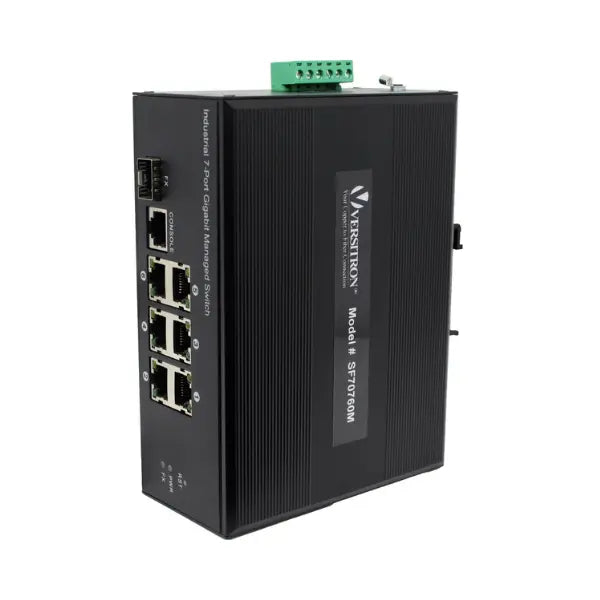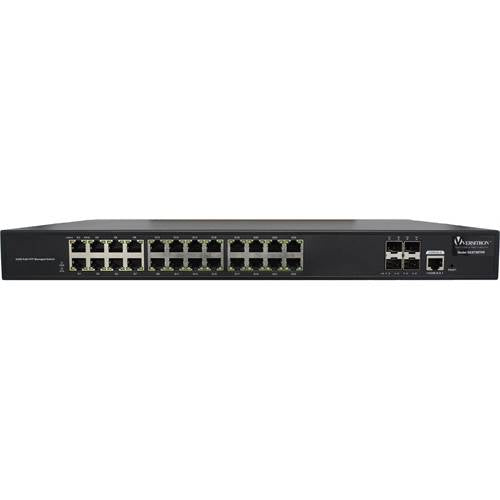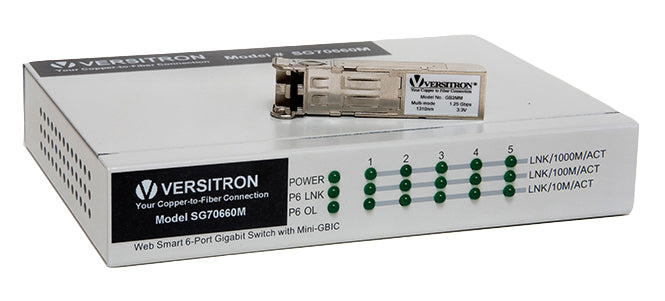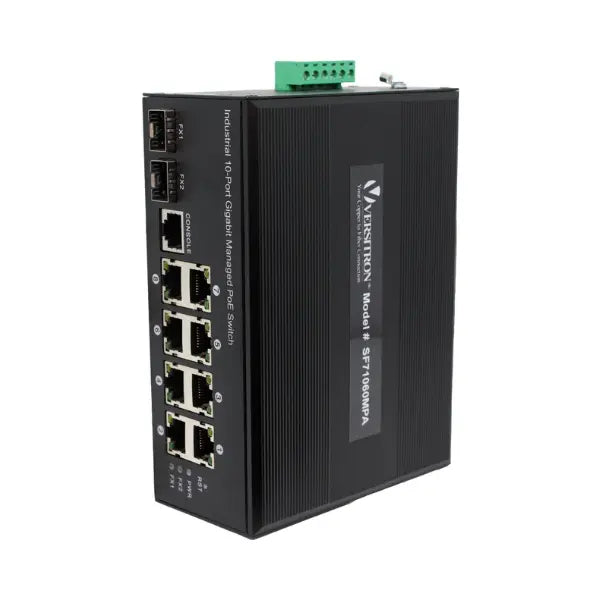The choosing between Brite Box and White Box switches has become crucial for companies looking to maximize network performance in the constantly changing world of networking infrastructure. The best kind of switch to choose will rely on a number of variables, including your use cases, budget, and scalability needs. These two switch types each have unique benefits and drawbacks.

Understanding Brite Box Switches
Brite Box switches, also known as branded switches, are networking devices manufactured and sold by established vendors such as Cisco, Juniper, and Arista, Versitron. These switches are pre-configured, come with proprietary operating systems, and often include additional features and support services provided by the vendor. Brite Box switches are known for their reliability, ease of integration, and comprehensive technical support.
Advantages of Brite Box Switches
Vendor Support: Brite Box switches benefit from the robust support infrastructure provided by the vendor. This includes regular firmware updates, patches, and technical assistance, ensuring that your network stays secure and up-to-date.
Plug-and-Play Installation: Brite Box switches are designed for easy integration into existing networks. They often come pre-configured, allowing for a seamless plug-and-play installation process. This simplicity is particularly beneficial for organizations with limited IT expertise.
Proven Performance: Since Brite Box switches are developed by established vendors with a track record of delivering high-quality networking equipment, users can trust in the proven performance and reliability of these devices.
Feature-Rich: Brite Box switches typically come with a wide range of features and functionalities, including advanced security protocols, traffic monitoring tools, and Quality of Service (QoS) settings. These features make it easier for organizations to customize their network infrastructure to meet specific requirements.
Limitations of Brite Box Switches
Cost: One of the primary drawbacks of Brite Box switches is their higher upfront cost. The inclusion of vendor support and proprietary features contributes to a premium price, which may be a significant factor for organizations with tight budgets.
Limited Customization: Brite Box switches are designed with the vendor's proprietary operating systems, limiting the extent to which users can customize and modify the device. This lack of flexibility may be a drawback for organizations with unique networking needs.
Exploring White Box Switches
White Box switches, also known as open switches, are hardware devices that come without a pre-installed operating system. Unlike Brite Box switches, White Box switches provide users with the freedom to choose and install their preferred network operating system (NOS). This flexibility allows for greater customization and optimization of the network infrastructure.
Advantages of White Box Switches
Cost-Effective: White Box switches are generally more cost-effective than their Brite Box counterparts. Without the added expense of proprietary software and vendor support, organizations can allocate their budget more efficiently.
Flexibility and Customization: The defining feature of White Box switches is their flexibility. Users have the freedom to choose the NOS that best suits their requirements, enabling greater customization and optimization of network performance.
Scalability: White Box switches are highly scalable, making them suitable for organizations experiencing rapid growth or those with dynamic networking needs. The ability to choose and modify the NOS allows for seamless scalability as the network evolves.
Community Support: The open nature of White Box switches has fostered a community-driven ecosystem where users can collaborate, share insights, and contribute to the development of compatible software. This community support can be invaluable for troubleshooting and optimizing the network.
Limitations of White Box Switches
Technical Expertise Required: Deploying and managing White Box switches may require a higher level of technical expertise. Organizations without a dedicated IT team or with limited networking knowledge may find the learning curve steep.
Lack of Vendor Support: Unlike Brite Box switches, White Box switches do not come with the support infrastructure provided by established vendors. This absence of vendor support may pose challenges in terms of troubleshooting and obtaining timely assistance.
What is White Box Networking?
White box networking is the process of constructing a network using white box switches. Customers can select the switch that best suits their needs by using an open-standards-based portable NOS that is compatible with several white box switch providers' devices. Traditional networks are constructed using switches and routers that are usually purchased from a single vendor and run a proprietary switch network operating system (SOS). This is in sharp contrast to white box networking.
Key aspects of white box networking include
Commodity Hardware: Instead of using specialized networking hardware from traditional vendors, white box networking utilizes off-the-shelf, generic hardware components that are often less expensive.
Open Networking Software: It involves the use of open-source or third-party networking software, such as Open Network Linux (ONL), Cumulus Linux, or OpenSwitch. These software solutions provide the necessary networking functionalities, including routing, switching, and management.
Software-Defined Networking (SDN): White box networking often integrates with SDN principles, enabling centralized control and programmability of the network through software-defined controllers. SDN allows for dynamic network configuration and management, facilitating automation and agility in network operations.
Vendor Neutrality: It also promotes vendor neutrality, allowing organizations to mix and match hardware and software components from different vendors based on their specific requirements and preferences.
Customization and Flexibility: By decoupling hardware and software, white box networking offers greater customization and flexibility in designing and optimizing network infrastructure to meet specific business needs and performance requirements.
Cost Savings: One of the primary motivations for adopting white box networking is the potential cost savings associated with using commodity hardware and open-source software compared to proprietary networking solutions.
How to Choose Between Brite Box and White Box Switches
Assessing Your Network Requirements
Scalability Needs: Consider the current size of your network and anticipate future growth. If scalability is a crucial factor, White Box switches may offer a more flexible solution.
Budget Constraints: Evaluate your budget constraints and weigh the upfront costs against long-term savings. If you have a limited budget and are willing to invest in technical expertise, White Box switches may be a cost-effective choice.
Technical Expertise: Assess the level of technical expertise available within your organization. If you have a skilled IT team capable of handling the customization and management of White Box switches, the lack of vendor support may be less of a concern.
Specific Use Cases: Consider your organization's specific use cases and networking requirements. Brite Box switches may be preferable for standardized environments with minimal customization needs, while White Box switches are better suited for organizations with unique or evolving networking demands.
Evaluating Support and Maintenance
Vendor Support: If having reliable vendor support is a top priority, Brite Box switches may be the preferred choice. The support infrastructure provided by established vendors can be invaluable for troubleshooting and resolving issues promptly.
Community Support: If your organization is comfortable relying on community-driven support and values the flexibility that White Box switches offer, the open ecosystem may align better with your needs. Engage with the open-source community to gauge the level of support available.
Weighing Customization Options
Level of Customization: Assess the extent to which your organization requires customization. If you need fine-grained control over your network infrastructure and the ability to tailor it to specific needs, White Box switches provide a higher level of customization.
Out-of-the-Box Features: Consider whether the out-of-the-box features provided by Brite Box switches align with your requirements. For organizations with standard networking needs, the pre-configured features of Brite Box switches may be sufficient.
Future-Proofing Your Network
Technology Trends: Stay informed about current technology trends and future developments in networking. Evaluate whether Brite Box or White Box switches are better aligned with the direction of your organization and the industry.
Upgrade Paths: Consider the upgrade paths offered by both types of switches. Assess whether the chosen solution can adapt to emerging technologies and standards without significant disruptions to your network.
Conclusion
Choosing between Brite Box and White Box switches requires a careful consideration of your organization's unique needs, budget constraints, and technical capabilities. While Brite Box switches offer the reliability and support of established vendors, White Box switches provide unparalleled flexibility and cost-effectiveness. By thoroughly assessing your network requirements and evaluating factors such as scalability, budget, technical expertise, and customization needs, you can make an informed decision that aligns with the long-term goals of your organization.
Ultimately, whether you opt for the familiarity of Brite Box switches or the customization options of White Box switches, the key is to choose a solution that empowers your network to meet the challenges of today and adapt to the opportunities of tomorrow.












